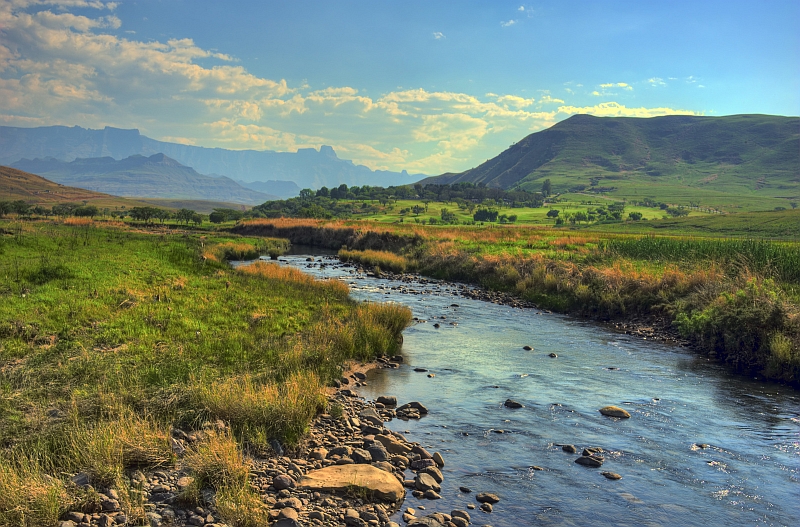Managing ecosystem services in the Drakensberg
The Barrier of Spears. That is the name that the Zulu people gave to the imposing mountain range that dominates the eastern area of South Africa. Later settlers called them the Drakensberg – Dragon Mountains; both names evoking the jagged nature of its sheer basalt peaks .The Drakensberg range rises to more than 11,400 feet and extends roughly northeast to southwest for 700 miles parallel to the southeastern coast of South Africa. In 2000 the uKhahlamba Drakensberg Park was made a UNESCO World Heritage site for its ancient San rock paintings. But value of this mountain range extends far beyond its historic importance. It is also vital for the water security of the region. The northern part of the range, for instance, drains predominantly into the Vaal River which supplies water to Johannesburg. It is also significant from a biodiversity perspective. Of the 2153 plant species found in the range, a remarkable 98 are endemic or near-endemic.
The Drakensberg is flanked by a combination of communal and commercial farmland. These areas contribute to and impact on the water supplied by the region. Individual owners are responsible for managing their land in accordance with national policy. This policy is implemented by various government departments who face numerous challenges in undertaking and co-coordinating their efforts. Complex tenure arrangement and management challenges pose a significant threat to this fragile ecosystem.

Poor management
In areas of communal ownership, for instance, no overall management plan is in place. Overstocking and poor fire management has reduced the rangeland condition and made erosion a common problem. In areas of commercial agriculture, grasslands are managed to provide optimal grazing for livestock and annual burning of the grassland is common practice to encourage new growth and to lower the risk of runaway fires. Although fire management is important for the maintenance of these grasslands, the burning regimes employed by the farmer may differ from those required for optimal water supply. Overstocking and poor fire management degrades the grassland ecosystem by changing the species composition and reducing the basal cover of the vegetation. This in turn reduces the infiltration of rainwater. As a result, less water is produced by the catchment and its delivery becomes more erratic.
“The day-to-day management needs of farmers and communities do not chime with national policies for managing water resources and ecosystems” says IWMI researcher Robyn Johnston. “The range of issues is very complex but the Afromaison project, which is led by our colleagues from the South African Institute of Natural Resources (INR), in collaboration with local municipalities, is trying to bridge the divide between these two.”
A three-fold approach
Afromaison aims to bridge the divides over land, water and ecosystem divides using a three-fold approach.
[fancy-ul style=”arrow-type3-list” variation=”blue”]
- The researchers work together with the District Municipality and other stakeholders to contribute to an environmental management framework, which facilitates spatial planning of the area.
- Through an Ecosystem Services Approach individual ecosystems are evaluated depending on supply and demand of ecosystem services. Priority areas are then identified for selected interventions.
- Last the researchers make use of participatory role plays to increase the understanding of ecosystem services and appropriate management.
[/fancy-ul]
Robyn Johnston presented on Afromaison at the Workshop Bridging Land-Water-Ecosystem Divides September 4 at 14:00-17:30 in Room B2/3 at World Water Week in Stockholm.

